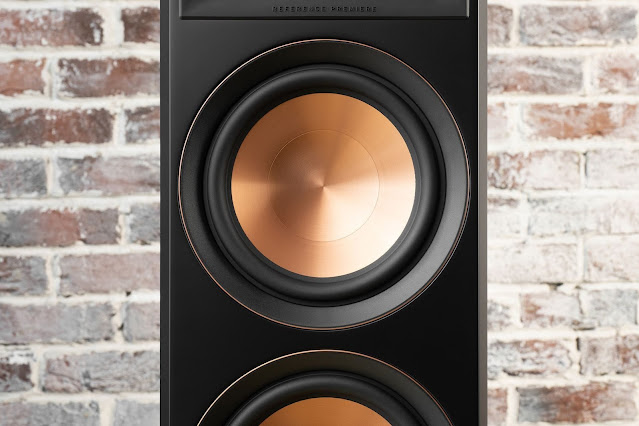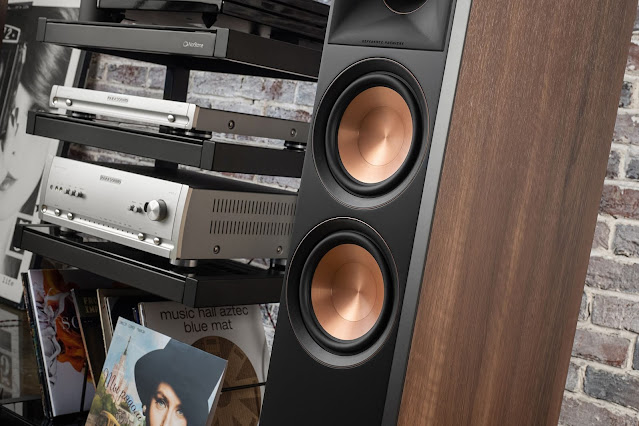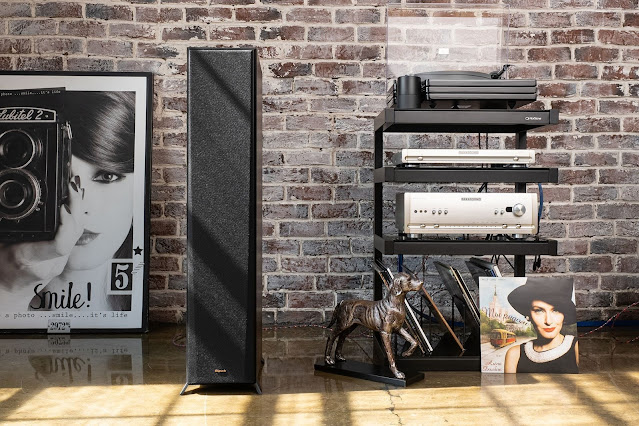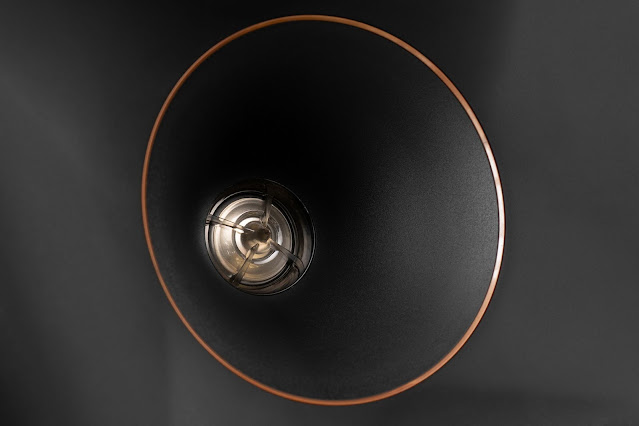Klipsch Reference Premier RP-6000F II floorstanding review
The updated Reference Premier series from Klipsch made a positive impression on me: both the design has become neater and the sound is richer. First of all, I got acquainted with the largest and most powerful floorstanders RP-8000F II, which made an impression with their impressive appearance and vocal abilities. But what if you choose something more modest, because not every living room can accommodate "eight-thousanders"? We go back and listen to the RP-6000F II.
In details and trifles
The well-known idiomatic expression "The devil is in the details" has a different form, which is considered more ancient: "God is in the details" or "God is in the details." In both cases, the authors of the idiom say that attention to detail can change everything - and in relation to the design of speaker systems, and high-end audio in general, this formulation fits very well.
It is in this way that Klipsch engineers make their seemingly standard set of horns and drivers sound better and better with each generation. We got acquainted with the main innovations of Reference Premier II last time, and now we will consider them in a little more detail.
Branded high-frequency horns with a complex cross-section - round in the center and turning to a square at the edges - are made of silicone composite and have a soft texture that is pleasant to the touch, which allows you to dampen microvibrations. But the most interesting thing is that the main part of the horn, coming after the copper ring, is a kind of lining, under which there is a rigid plastic frame.
It is to this frame that the tweeter module is attached through shock-absorbing pads, and the main part of the horn is inserted into the structure from the outside, which provides additional vibration decoupling from the acoustics housing and the emitter itself, and the horn.
Mid/bass speakers also have their tricks. If you compare the appearance of these radiators in the first and second versions of the Reference Premier, you will notice that in both cases they have a decorative overlay in the form of a small horn, as if continuing the line of the cone - but at the same time, the new cones have a completely different shape: they are deeper and equipped with dust cap with a smaller diameter.
Due to this, the developers further narrowed the radiation pattern and minimized the possible impact on the sound of the edges of the case. And this means that the sound at the listening point should turn out to be a little cleaner and more focused.
For better cone control, an updated voice coil is used that is significantly longer than the previous version of the drivers. It is wound on a ventilated frame and is in the field of a massive ferrite magnet. Distortion is reduced by a faraday ring installed in the magnetic gap.
The cases of the new Reference Premier II, as well as in the previous version, have internal partitions, but there are more of them - this increases the rigidity of the structure. For cases with sidewalls of such a large area, this is not at all an extra refinement. Another important difference: the first Reference Premier had a common acoustic volume and had one bass-reflex port, while the second version has solid partitions dividing the acoustic volume into two compartments isolated from each other.
Each compartment operates with a single mid/bass driver and is equipped with a branded bass reflex with Tractrix horn ports installed both outside and inside - at the opposite end of the bass reflex. In this design, the woofers do not have a negative impact on each other, and two ports give more opportunities in terms of adapting acoustics to listening conditions. In a small room or when installed close to a wall, it will be possible to dose the amount of bass.
At the base of the acoustics is a large aluminum plate containing three pairs of terminals at once - two for bi-amping and the third for a cable line designed for a high-altitude Dolby Atmos channel, which can be placed on top of a floor standing speaker. Both the set of terminals, and the aluminum panel on which they are located, and the cable line are innovations of the company's engineers.
The arrangement of the main terminals in one line will especially appeal to those who love a crossed single-cable connection - when the bass terminal is used for the minus, and the high-frequency terminal for the plus. On the new terminal platform, they are located side by side.
In 6.5" format
I compared the design of the new RP-6000F II with the models of the previous generation, and in terms of sound they are much more interesting to compare with the previously tested RP-8000F II.
The main differences between the RP-6000F II and the older model are the caliber of the midrange/woofers, which is 6.5 inches instead of 8, and the body dimensions changed in proportion to this. Thanks to this approach, these two models look like nesting dolls when they stand side by side - the shape is the same, but the sizes are different.
The differences in passport data are quite noticeable. The RP-6000F II has a 2 dB lower sensitivity, although it can also be considered high - 96 dB is no joke! The power is expectedly less, and the lower limit is slightly higher - 38 Hz versus 35 Hz. Interestingly, the crossover frequency is also different: in the RP-6000F II it is higher and is at around 1770 Hz.
What does it give in practice? The most important thing, fortunately, has remained in place: the RP-6000F II, like their older counterparts, pleases with the clearest and most detailed sound with excellent rendering of the smallest nuances and shades of melodies.
It is worth turning on a high-resolution track or high-quality modern vinyl - and the acoustics immediately bring down a lot of sound information on the listener, recreating the musical picture with holographic accuracy.
At first, you even get scared when someone suddenly starts to sing or rustle your fingers on the soundboard of the double bass. The specificity of the mixes on Klipshah is also well audible, so the wall of sound in the spirit of the 90s appears exactly as a wall: it hangs, presses, deafens - everything is as intended. Needless to say, between the rock of that period and the superbly written modern metal, I preferred the latter? Well, the progressive of the 70s, of course, also went well.
With the ability to separate instruments, clearly define each rhythmic pattern, and at the same time maintain the integrity of the sound, Klipsch are definitely attracting attention in their price category. They combine excellent resolution with no less excellent musicality, thanks to which they completely shift the responsibility for sound quality to the rest of the system components and the sound engineers who worked on the track being played.
Specifically, there are no complaints about the RP-6000F II - except for one point that manifested itself in a direct comparison with the older model RP-8000F II. Let's talk about the bass. On the RP-6000F II it is less deep and the bottom notes feel a bit forced and less defined.
There is a feeling that the bass reflexes of this model are tuned higher, because of which, as the frequency decreases, control is slightly lost, and this gives a feeling of more bass. In addition, the lowest notes do not sound as fundamental as the older model.
While the RP-8000F II is quite capable of pumping a large room without a subwoofer, the RP-6000F II in a home theater setup will require little bass boost. And in order not to give a false impression of the talents of the 6.5-inch model, it must be clarified that the audition took place in a fairly large room that is suitable for the 8000s, but already too big for the 6000s - which means that in a typical living room of 25 squares the situation may be quite different. In addition, the bass quality, which seems imperfect against the background of the older model, in comparison with many competitors will be felt as the best possible.
Verdict
Like the older model, the Klipsch Reference Premier RP-6000F II is an attractive option in its price category. They combine detail and precision with melodiousness and musicality in the right proportions, allowing you to enjoy both crystal clear aesthetic recordings and primal rocker drive.
Differences from the older model are minimal. In terms of design, these are twin brothers with all their pluses and minuses, such as convenient terminals and non-adjustable supports. In terms of sound, you can achieve almost the same results with a slight adjustment for the quantity and quality of the lowest notes - with the RP-6000F II, you may have to fiddle a little more with finding the optimal position in the room.
Pros
excellent balance of musicality and high resolution, rhythmic and dynamic presentation, genre versatility, two phase inverters simplify the arrangement in the room
Cons
fixed supports
OFFICIAL SITE
Klipsch Reference Premier RP-6000F II
Klipsch Reference Premier RP-6000F II specifications
Tweeter: 25 mm titanium dome in Tractrix horn
Mid/bass drivers: 2 x 165 mm, Cerametallic cone
Frequency range: 38-25,000 Hz (+\-3 dB)
Sensitivity: 96 dB
Power: 125W (continuous) / 500W (peak)
Impedance: 8 ohm
Crossover frequency: 1770 Hz
Acoustic design: phase inverter
Dimensions: 1006x224x446 mm
Weight: 22.4 kg
Finish: vinyl, ebony/walnut





















.jpg)



0 Comments